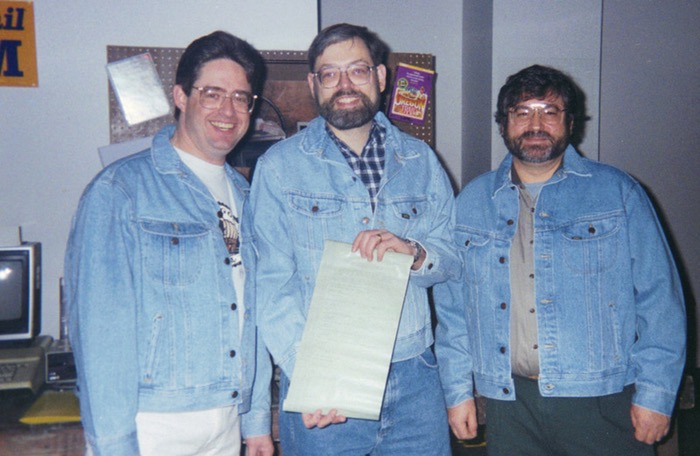For three years, the only copy of the Oregon Trail source code was printed on a stack of paper

On December 3, 1971, college history-teacher-in-training Don Rawitsch presented his class with a new way to learn about the American west: a computer game called The Oregon Trail. The students interacted with The Oregon Trail via teletype, a fancy typewriter that connected to a mainframe computer and printed output from the software on sheets of paper. There was no screen, no animation to convey the game. Just text, printed at a rate of 10 characters per second, and a single sound, the only audio feedback the teletype could muster. They were blown away.
For two weeks, groups of students took turns playing this basic first incarnation of The Oregon Trail, created by Rawitsch and two other student teachers, Bill Heinemann and Paul Dillenberger, who were studying math and programmed the game. There was only one teletype for the whole school, and Rawitsch found that during lunch and in the afternoons, students from other classes were lining up for a chance to play. But soon winter break arrived, and Rawitsch and his co-creators were ending their student teacher tenure. So they did what seemed natural to them at the time: they printed out the source code of The Oregon Trail and deleted their program off the room-sized mainframe it was installed on.
There was exactly one copy of The Oregon Trail in existence, and it was printed out on paper. Imagine a fire, or a perfectly spilled glass of water, or someone looking at a bunch of gibberish on a stack of paper and tossing it in the recycling.
At his classic game post-mortem at this year's GDC, Rawitsch fondly referred to that paper copy of The Oregon Trail as the Sacred Scrolls. A joke, but also sort of not. For that brief period The Oregon trail existed in a form very few videogames can claim. Entirely, singularly analog.
Nothing happened to the Sacred Scrolls. Three years later, Rawitsch took a job at MECC, the Minnesota Educational Computing Consortium, and found on MECC's mainframe a wide range of educational programs. He thought about The Oregon Trail, and asked if he could add The Oregon Trail. They said sure, and so he spent a weekend copying 800 lines of code to bring The Oregon Trail back to life.
With the game digital once again, Rawitsch decided to make some improvements, digging into research he didn't have time for in the absurdly short two weeks it took Heinemann and Dillenberger to program the game. He looked into the mileage traveled by real westward migrants to determine how often you should encounter events and where the geography should change. He read real diaries and took tally of illnesses and deaths and successful trips. He read about the weather conditions. And he learned that Native Americans often helped travelers, rather than attacking wagons like in western movies.

He made the basics of what would eventually form later versions of The Oregon Trail for the Apple II and DOS and Windows and all the rest. In the 1970s, when schools still communicated with mainframes via teletype, it was the most popular software in Minnesota schools for five years.
Keep up to date with the most important stories and the best deals, as picked by the PC Gamer team.
Today, there are at least 65 million digital copies of The Oregon Trail, and at least one still on paper.

Wes has been covering games and hardware for more than 10 years, first at tech sites like The Wirecutter and Tested before joining the PC Gamer team in 2014. Wes plays a little bit of everything, but he'll always jump at the chance to cover emulation and Japanese games.
When he's not obsessively optimizing and re-optimizing a tangle of conveyor belts in Satisfactory (it's really becoming a problem), he's probably playing a 20-year-old Final Fantasy or some opaque ASCII roguelike. With a focus on writing and editing features, he seeks out personal stories and in-depth histories from the corners of PC gaming and its niche communities. 50% pizza by volume (deep dish, to be specific).

